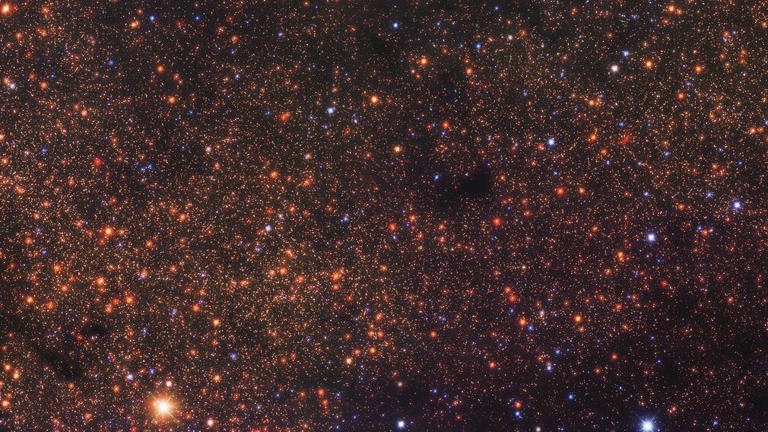3I/ATLAS Interstellar Object Mystery continues to baffle scientists as the object hurtling through our solar system appears to produce its own light, raising questions about its origin and whether it could be artificial.

3I/ATLAS Interstellar Object Mystery
The 3I/ATLAS Interstellar Object Mystery has taken a new turn as scientists study a strange object moving through our solar system. Unlike ordinary comets or asteroids, 3I/ATLAS seems to produce its own light. This surprising discovery has left researchers puzzled and led to questions about whether the object could be artificial in origin.
According to Harvard astrophysicist Avi Loeb, the object shows a glow that looks similar to a vehicle turning on its headlights. But the source of this light is still unknown, sparking debates in the scientific community.
Strange Observations From Hubble
The image revealed a glowing patch on the side of the object facing the sun. Unlike a comet’s typical reflective glow, this light is concentrated and fades quickly with distance, rather than spreading evenly around the object.
This unusual behavior makes scientists question whether 3I/ATLAS is a regular comet, which usually reflects sunlight in a predictable way.
Why It Might Not Be a Comet
Traditionally, comets glow because dust and gas reflect sunlight, forming a visible coma around them. However, the 3I/ATLAS Interstellar Object Mystery stands out because:
-
3I/ATLAS lacks a coma, the typical cloud of dust and gas around comets.
-
Its brightness decreases sharply with distance, unlike normal comet reflection.
-
It is traveling on a rare path near Venus, Mars, and Jupiter, a trajectory scientists say has less than a 0.005% chance of occurring naturally.
These observations suggest that 3I/ATLAS may not be a comet at all.
Could It Be Artificial?
One of the most intriguing aspects of the 3I/ATLAS Interstellar Object Mystery is the possibility that the object could be artificial.
If the object is generating its own light, its size could be much smaller than first estimated. While early observations suggested it was about 12 miles long, Loeb believes it could be as small as 300 feet, similar in size to ‘Oumuamua, the first interstellar object detected in 2017.
The idea is that the object’s brightness could fool telescopes into thinking it’s larger than it really is, much like how a bright flashlight appears larger from a distance.
Alternative Explanations
Scientists are exploring other explanations for the 3I/ATLAS Interstellar Object Mystery. One theory is that the glow comes from dust particles evaporating as the object is heated by the sun. Unlike a comet, however, 3I/ATLAS does not show a tail of trailing material, which makes this explanation incomplete.
Other natural possibilities, such as friction heating from space dust, remnants of a supernova, or radioactive decay, appear unlikely. The observed brightness and light pattern do not match what these processes would produce.
Strange Motion Through the Solar System
The 3I/ATLAS Interstellar Object Mystery also includes its unusual movement. Researchers have noted that its path takes it unusually close to three planets, which is extremely rare for a natural object. Loeb points out that the odds of a random space rock following this path are less than 0.005%, further fueling speculation about an artificial origin.
Similar to ‘Oumuamua, which displayed unexpected acceleration, 3I/ATLAS could also have properties that defy conventional understanding of interstellar rocks.
Upcoming Observations
Scientists are eagerly waiting for October 3, when 3I/ATLAS will pass close to Mars. Observations during this flyby may provide better images and data, helping determine whether this object is a natural space rock or something more extraordinary, like a probe from another civilization.
These upcoming images could be key to solving the 3I/ATLAS Interstellar Object Mystery, offering a clearer look at its size, composition, and behavior.
What Makes 3I/ATLAS Unique
The 3I/ATLAS Interstellar Object Mystery is unique for several reasons:
-
It appears to generate its own light, unlike any comet seen before.
-
It lacks the coma typical of cometary bodies.
-
Its trajectory is unusual, passing near multiple planets.
-
Its brightness pattern decreases sharply, suggesting a focused light source rather than reflected sunlight.
These factors make it one of the most intriguing interstellar objects studied in recent years, prompting comparisons to the 2017 ‘Oumuamua encounter.
Conclusion
The 3I/ATLAS Interstellar Object Mystery continues to challenge scientists’ understanding of interstellar objects. While some explanations point to natural causes like dust emission, the unusual glow, trajectory, and lack of a cometary coma leave room for speculation about an artificial origin.
As astronomers prepare for the October observations near Mars, the world watches closely. Whether 3I/ATLAS is a natural visitor from another star system or a highly advanced spacecraft, it is certain to teach us something new about our solar system and the mysteries beyond.
Related:
Primordial Black Holes Evidence: 3 Astonishing Breakthroughs